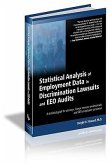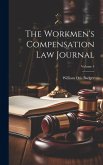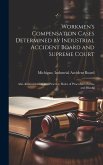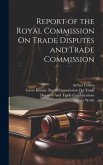- Gebundenes Buch
- Merkliste
- Auf die Merkliste
- Bewerten Bewerten
- Teilen
- Produkt teilen
- Produkterinnerung
- Produkterinnerung
Get a clear and accessible introduction to employment law, with practical activities, case law examples, and critical debates designed for HRM, business, and CIPD students.
Andere Kunden interessierten sich auch für
![The Law of the Employers' Liability: For the Negligence of Servants Causing Injury to Fellow Servants The Law of the Employers' Liability: For the Negligence of Servants Causing Injury to Fellow Servants]() Thomas BevenThe Law of the Employers' Liability: For the Negligence of Servants Causing Injury to Fellow Servants29,99 €
Thomas BevenThe Law of the Employers' Liability: For the Negligence of Servants Causing Injury to Fellow Servants29,99 €![Statistical Analysis of Employment Data in Discrimination Lawsuits and EEO Audits Statistical Analysis of Employment Data in Discrimination Lawsuits and EEO Audits]() Dwight D. StewardStatistical Analysis of Employment Data in Discrimination Lawsuits and EEO Audits176,99 €
Dwight D. StewardStatistical Analysis of Employment Data in Discrimination Lawsuits and EEO Audits176,99 €![The Law of Trade Unions in England and Scotland Under the Trade Union Act, 1871 The Law of Trade Unions in England and Scotland Under the Trade Union Act, 1871]() William GuthrieThe Law of Trade Unions in England and Scotland Under the Trade Union Act, 187129,99 €
William GuthrieThe Law of Trade Unions in England and Scotland Under the Trade Union Act, 187129,99 €![The Workmen's Compensation Law Journal; Volume 4 The Workmen's Compensation Law Journal; Volume 4]() William Otis BadgerThe Workmen's Compensation Law Journal; Volume 443,99 €
William Otis BadgerThe Workmen's Compensation Law Journal; Volume 443,99 €![Workmen's Compensation Workmen's Compensation]() James Edward RhodesWorkmen's Compensation32,99 €
James Edward RhodesWorkmen's Compensation32,99 €![Workmen's Compensation Cases Determined by Industrial Accident Board and Supreme Court: Also Administration and Practice, Rules of Procedure, Forms an Workmen's Compensation Cases Determined by Industrial Accident Board and Supreme Court: Also Administration and Practice, Rules of Procedure, Forms an]() Workmen's Compensation Cases Determined by Industrial Accident Board and Supreme Court: Also Administration and Practice, Rules of Procedure, Forms an38,99 €
Workmen's Compensation Cases Determined by Industrial Accident Board and Supreme Court: Also Administration and Practice, Rules of Procedure, Forms an38,99 €![Report of the Royal Commission On Trade Disputes and Trade Commission Report of the Royal Commission On Trade Disputes and Trade Commission]() Sidney WebbReport of the Royal Commission On Trade Disputes and Trade Commission29,99 €
Sidney WebbReport of the Royal Commission On Trade Disputes and Trade Commission29,99 €-
-
-
Get a clear and accessible introduction to employment law, with practical activities, case law examples, and critical debates designed for HRM, business, and CIPD students.
Produktdetails
- Produktdetails
- Verlag: Sage Publications Ltd
- 6 Revised edition
- Seitenzahl: 660
- Erscheinungstermin: 8. November 2025
- Englisch
- Abmessung: 246mm x 189mm
- ISBN-13: 9781529690675
- ISBN-10: 1529690676
- Artikelnr.: 74062925
- Herstellerkennzeichnung
- Libri GmbH
- Europaallee 1
- 36244 Bad Hersfeld
- gpsr@libri.de
- Verlag: Sage Publications Ltd
- 6 Revised edition
- Seitenzahl: 660
- Erscheinungstermin: 8. November 2025
- Englisch
- Abmessung: 246mm x 189mm
- ISBN-13: 9781529690675
- ISBN-10: 1529690676
- Artikelnr.: 74062925
- Herstellerkennzeichnung
- Libri GmbH
- Europaallee 1
- 36244 Bad Hersfeld
- gpsr@libri.de
Stephen Taylor is Associate Professor in HRM at the University of Exeter Business School.
Part 1: Foundations
Chapter 1: The rise of employment law
Chapter 2: Sources of employment law and institutions
Chapter 3: Barriers to employment rights
Part 2: The contract of employment
Chapter 4: Unfair dismissal-reasons and remedies
Chapter 5: Unfair dismissal-Reasonableness
Chapter 6: Redundancy
Chapter 7: Contractual employment rights
Chapter 8: Implied terms
Chapter 9: Wrongful and constructive dismissal
Part 3: Discrimination law
Chapter 10: Introducing discrimination law
Chapter 11: The Equality Act 2010: key concepts
Chapter 12: Age discrimination
Chapter 13: Disability discrimination
Chapter 14: Race discrimination
Chapter 15: Religious discrimination
Chapter 16: Sex discrimination
Chapter 17 Sex-related characteristics (gender reassignment, marital
status, pregnancy, sexual orientation)
Chapter 18 Equal pay
Chapter 19: Discrimination against atypical workers
Part 4: Employment policy and practice
Chapter 20: Family-Friendly Statutes and Flexible Working
Chapter 21: Wages and benefits
Chapter 22: Privacy and confidentiality
Chapter 23: TUPE
Part 5: Health and safety
Chapter 24: Health and safety-the criminal law
Chapter 25: Health and safety-The civil law
Chapter 26: Working time
Part 6: Collective employment law
Chapter 27: Freedom of association
Chapter 28: Consultation and bargaining
Chapter 29: Industrial action
Chapter 30: Employment Tribunal Procedure
Chapter 31: Preparing and presenting a case
Chapter 1: The rise of employment law
Chapter 2: Sources of employment law and institutions
Chapter 3: Barriers to employment rights
Part 2: The contract of employment
Chapter 4: Unfair dismissal-reasons and remedies
Chapter 5: Unfair dismissal-Reasonableness
Chapter 6: Redundancy
Chapter 7: Contractual employment rights
Chapter 8: Implied terms
Chapter 9: Wrongful and constructive dismissal
Part 3: Discrimination law
Chapter 10: Introducing discrimination law
Chapter 11: The Equality Act 2010: key concepts
Chapter 12: Age discrimination
Chapter 13: Disability discrimination
Chapter 14: Race discrimination
Chapter 15: Religious discrimination
Chapter 16: Sex discrimination
Chapter 17 Sex-related characteristics (gender reassignment, marital
status, pregnancy, sexual orientation)
Chapter 18 Equal pay
Chapter 19: Discrimination against atypical workers
Part 4: Employment policy and practice
Chapter 20: Family-Friendly Statutes and Flexible Working
Chapter 21: Wages and benefits
Chapter 22: Privacy and confidentiality
Chapter 23: TUPE
Part 5: Health and safety
Chapter 24: Health and safety-the criminal law
Chapter 25: Health and safety-The civil law
Chapter 26: Working time
Part 6: Collective employment law
Chapter 27: Freedom of association
Chapter 28: Consultation and bargaining
Chapter 29: Industrial action
Chapter 30: Employment Tribunal Procedure
Chapter 31: Preparing and presenting a case
Part 1: Foundations
Chapter 1: The rise of employment law
Chapter 2: Sources of employment law and institutions
Chapter 3: Barriers to employment rights
Part 2: The contract of employment
Chapter 4: Unfair dismissal-reasons and remedies
Chapter 5: Unfair dismissal-Reasonableness
Chapter 6: Redundancy
Chapter 7: Contractual employment rights
Chapter 8: Implied terms
Chapter 9: Wrongful and constructive dismissal
Part 3: Discrimination law
Chapter 10: Introducing discrimination law
Chapter 11: The Equality Act 2010: key concepts
Chapter 12: Age discrimination
Chapter 13: Disability discrimination
Chapter 14: Race discrimination
Chapter 15: Religious discrimination
Chapter 16: Sex discrimination
Chapter 17 Sex-related characteristics (gender reassignment, marital
status, pregnancy, sexual orientation)
Chapter 18 Equal pay
Chapter 19: Discrimination against atypical workers
Part 4: Employment policy and practice
Chapter 20: Family-Friendly Statutes and Flexible Working
Chapter 21: Wages and benefits
Chapter 22: Privacy and confidentiality
Chapter 23: TUPE
Part 5: Health and safety
Chapter 24: Health and safety-the criminal law
Chapter 25: Health and safety-The civil law
Chapter 26: Working time
Part 6: Collective employment law
Chapter 27: Freedom of association
Chapter 28: Consultation and bargaining
Chapter 29: Industrial action
Chapter 30: Employment Tribunal Procedure
Chapter 31: Preparing and presenting a case
Chapter 1: The rise of employment law
Chapter 2: Sources of employment law and institutions
Chapter 3: Barriers to employment rights
Part 2: The contract of employment
Chapter 4: Unfair dismissal-reasons and remedies
Chapter 5: Unfair dismissal-Reasonableness
Chapter 6: Redundancy
Chapter 7: Contractual employment rights
Chapter 8: Implied terms
Chapter 9: Wrongful and constructive dismissal
Part 3: Discrimination law
Chapter 10: Introducing discrimination law
Chapter 11: The Equality Act 2010: key concepts
Chapter 12: Age discrimination
Chapter 13: Disability discrimination
Chapter 14: Race discrimination
Chapter 15: Religious discrimination
Chapter 16: Sex discrimination
Chapter 17 Sex-related characteristics (gender reassignment, marital
status, pregnancy, sexual orientation)
Chapter 18 Equal pay
Chapter 19: Discrimination against atypical workers
Part 4: Employment policy and practice
Chapter 20: Family-Friendly Statutes and Flexible Working
Chapter 21: Wages and benefits
Chapter 22: Privacy and confidentiality
Chapter 23: TUPE
Part 5: Health and safety
Chapter 24: Health and safety-the criminal law
Chapter 25: Health and safety-The civil law
Chapter 26: Working time
Part 6: Collective employment law
Chapter 27: Freedom of association
Chapter 28: Consultation and bargaining
Chapter 29: Industrial action
Chapter 30: Employment Tribunal Procedure
Chapter 31: Preparing and presenting a case








